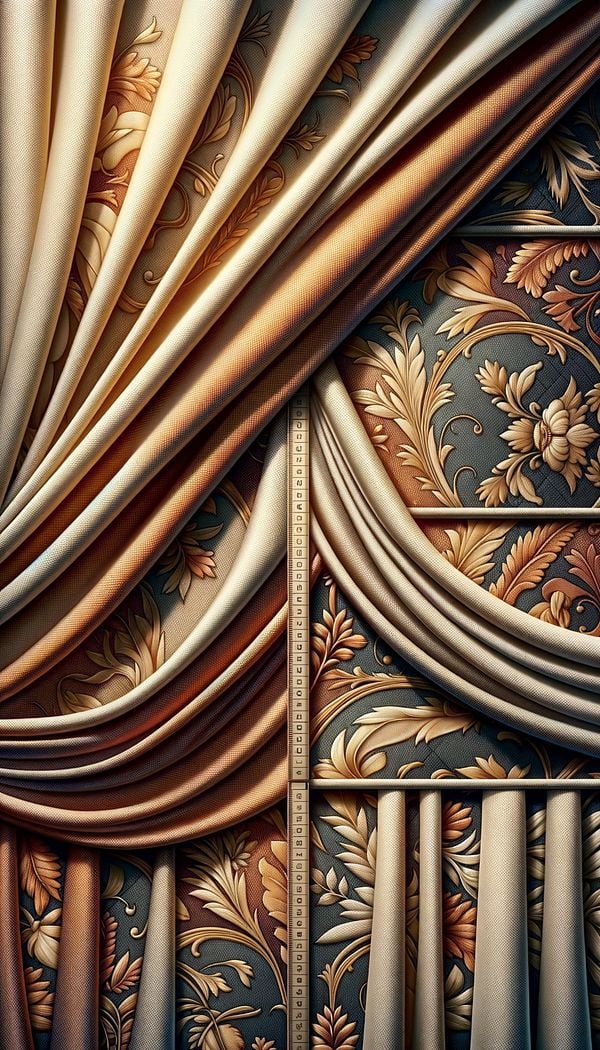What is Bias?
Bias in interior design refers to the diagonal direction of fabric grain.
Description
In the realm of interior design, the term 'bias' plays a significant role, particularly when it comes to working with fabrics and textiles. Bias refers to the diagonal direction that runs at a 45-degree angle to the fabric's warp and weft threads. This unique orientation provides fabrics with greater flexibility and stretch compared to other directions, allowing for a more fluid drape and fit when used in various design applications.
Utilizing fabrics on the bias can significantly alter the texture and aesthetic appeal of an interior space. When materials are cut on the bias, they exhibit a softer, more relaxed appearance, making them ideal for creating elegant drapes, dynamic upholstery, and intricate decorative elements. Moreover, bias-cut fabrics adapt better to curved surfaces, offering a seamless fit that's difficult to achieve with straight-grain cuts.
Despite its advantages, working with bias-cut fabrics requires a careful approach. The increased stretch and flexibility can lead to challenges in handling and sewing, necessitating precision and patience from designers. However, when skillfully executed, bias-cut elements can add depth, movement, and sophistication to an interior design project, emphasizing the importance of understanding fabric grain and its impact on aesthetic outcomes.
Usage
In interior design, bias-cut fabrics are often used for creating flowing window treatments, such as curtains and sheers, that gracefully drape. Upholstery projects also benefit from bias cuts, especially when covering rounded or irregularly shaped furniture pieces. Decorative accents like table runners and throw pillows may also feature bias-cut elements to add a touch of elegance and fluidity to the space.
FAQs
-
What is the difference between bias and straight grain?
The difference lies in their direction relative to the fabric's threads. Bias refers to the diagonal direction at a 45-degree angle to the warp and weft, offering more stretch and flexibility. Straight grain runs parallel to the warp or weft, providing less stretch and a firmer structure.
-
Why is working with bias-cut fabrics considered more challenging?
Due to the increased stretch and flexibility when cut on the bias, these fabrics are harder to handle and sew, requiring more precision and care during the making process.
-
Can bias be used for all types of fabrics?
While bias cutting can be applied to most fabrics, the results vary depending on the material's properties. Some fabrics, like silk or velvet, may yield more fluid drape and aesthetic appeal when cut on the bias, while others, like stiff cottons, show less noticeable differences.
Practical Application
If you're planning to incorporate bias-cut fabrics into your interior design project, starting with smaller, less complex items like throw pillows can be a smart approach. This allows you to gain hands-on experience with handling and sewing these fabrics before moving on to larger pieces. Additionally, always account for the extra stretch when measuring and cutting your materials to ensure a successful outcome.
-
Decorative Techniques322 articles
-
Materials & Textiles360 articles
-
Textiles & Upholstery252 articles
-
Claw & BallClaw & Ball is a decorative motif featuring a claw, paw, or talon grasping a ball, typically used in furniture legs.
-
MarbleMarble is a timeless, elegant natural stone often used in interior design.
-
Body ImpressionsBody Impressions refer to the indentations that form on the surface of a mattress or cushion over time, caused by the pressure of a person's body.
-
GrassclothGrasscloth is a type of wallpaper made from natural woven fibers.
-
BaggingBagging is a decorative wall finish obtained by applying a thin cement-based layer to walls and then manipulating it with a sponge or cloth.
